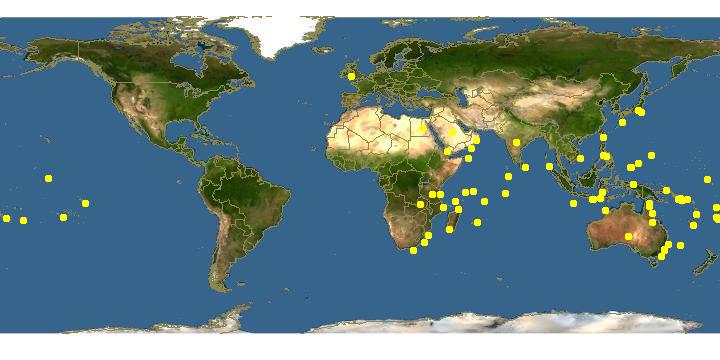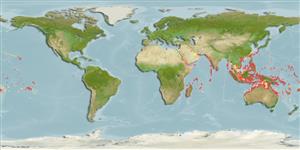http://www.fishbase.org/Summary/speciesSummary.php?genusname=Plagiotremus&speciesname=rhinorhynchos ---> http://192.134.151.83/Summary/speciesSummary.php?genusname=Plagiotremus&speciesname=rhinorhynchos
http://192.134.151.83/Summary/speciesSummary.php?genusname=Plagiotremus&speciesname=rhinorhynchos ---> https://fishbase.mnhn.fr/Summary/speciesSummary.php?genusname=Plagiotremus&speciesname=rhinorhynchos
https://fishbase.mnhn.fr/Summary/speciesSummary.php?genusname=Plagiotremus&speciesname=rhinorhynchos ---> https://fishbase.mnhn.fr/summary/Plagiotremus-rhinorhynchos.html
Plagiotremus rhinorhynchos, Bluestriped fangblenny : aquarium

You can
sponsor
this page
Common name (e.g. trout)
Genus + Species (e.g. Gadus morhua)
-

-
About this page
-
Languages
-
User feedbacks
-
Citation
-
Uploads
-
Related species
-


 Bluestriped fangblenny
Add your observation in
Fish Watcher
Upload your
photos
and
videos
Bluestriped fangblenny
Add your observation in
Fish Watcher
Upload your
photos
and
videos
Pictures
|
Videos |
Google image
 Plagiotremus rhinorhynchos
Plagiotremus rhinorhynchos
Picture by
Randall, J.E.
Teleostei (teleosts) >
Blenniiformes
(Blennies) >
Blenniidae
(Combtooth blennies) > Blenniinae
Etymology:
Plagiotremus:
Greek, plagios = oblique + Greek, trema = hole (Ref.
45335
)
.
More on author:
Bleeker
.
Environment: milieu / climate zone / depth range / distribution range
Ecology
Marine; reef-associated; depth range 1 - 40 m (Ref.
1602
). Subtropical; 30°N - 30°S
Indo-Pacific: Red Sea south to Knysna, South Africa (Ref.
4404
) and east to the Line, Marquesan and Society islands, north to southern Japan, south to Lord Howe Island. Replaced by
Plagiotremus ewaensis
in the Hawaiian Islands (Ref.
37816
).
Size / Weight / Age
Maturity: L
m
?
range ? - ? cm
Max length : 12.0 cm SL male/unsexed; (Ref.
559
)
Dorsal
spines
(total): 10 - 12;
Dorsal
soft rays
(total): 31-37;
Anal
spines
: 2;
Anal
soft rays
: 29 - 33. Adults variable in color, ranging from black to yellow; 2 blue stripes on body (Ref.
4404
,
48636
).
Adults inhabit clear, coral-rich areas of lagoon and seaward reefs (Ref.
1602
). They hide in deserted worm tubes or other small holes when alarmed (Ref.
1602
,
48636
), bite divers occassionally (Ref.
90102
). They feed on the skin, mucus and sometimes scales of other fishes by quick attacks. Oviparous. Eggs are demersal and adhesive (Ref.
205
), and are attached to the substrate via a filamentous, adhesive pad or pedestal (Ref.
94114
). Larvae are planktonic, often found in shallow, coastal waters (Ref.
94114
). Juveniles mimic the cleaner wrasse
Labroides dimidiatus
(Ref.
9710
). According to Ref. 53299 they are facultative mimics that change their color: at cleaning stations they mimic the cleaner wrasse and attack unsuspecting customers; elsewhere they adopt an alternative color and striping pattern to conceal themselves among fish shoals from which they can strike at passing fish.
Life cycle and mating behavior
Maturity
|
Reproduction
|
Spawning
|
Eggs
|
Fecundity
|
Larvae
Oviparous, distinct pairing (Ref.
205
).
Randall, J.E., G.R. Allen and R.C. Steene
, 1990. Fishes of the Great Barrier Reef and Coral Sea. University of Hawaii Press, Honolulu, Hawaii. 506 p. (Ref.
2334
)
IUCN Red List Status (Ref.
130435
)
Least Concern (LC)
; Date assessed:
27 March 2009
CITES
Not Evaluated
Not Evaluated
Threat to humans
Harmless
Human uses
Aquarium: commercial
FAO - Publication:
search
|
FishSource
|
More information
Countries
FAO areas
Ecosystems
Occurrences
Introductions
Stocks
Ecology
Diet
Food items
Food consumption
Ration
Common names
Synonyms
Metabolism
Predators
Ecotoxicology
Reproduction
Maturity
Spawning
Spawning aggregation
Fecundity
Eggs
Egg development
Age/Size
Growth
Length-weight
Length-length
Length-frequencies
Morphometrics
Morphology
Larvae
Larval dynamics
Recruitment
Abundance
BRUVS
References
Aquaculture
Aquaculture profile
Strains
Genetics
Electrophoreses
Heritability
Diseases
Processing
Nutrients
Mass conversion
Collaborators
Pictures
Stamps, Coins Misc.
Sounds
Ciguatera
Speed
Swim. type
Gill area
Otoliths
Brains
Vision
Tools
Bio-Quiz
|
E-book
|
Field guide
|
Length-frequency wizard
|
Life-history tool
|
Point map
|
Classification Tree
|
Catch-MSY
|
Special reports
Check for Aquarium maintenance
|
Check for Species Fact Sheets
|
Check for Aquaculture Fact Sheets
Download XML
Summary page
|
Point data
|
Common names
|
Photos
Internet sources
AFORO (otoliths) |
Aquatic Commons
|
BHL
|
Cloffa
|
BOLDSystems
|
Websites from users
|
Check FishWatcher
|
CISTI
|
Catalog of Fishes
:
genus
,
species
|
DiscoverLife
|
ECOTOX
| FAO - Publication:
search
|
Faunafri
| Fishipedia |
Fishtrace
| GenBank:
genome
,
nucleotide
|
GloBI
|
Google Books
|
Google Scholar
|
Google
| IGFA World Record |
MitoFish
|
National databases
|
Otolith Atlas of Taiwan Fishes
|
PubMed
|
Reef Life Survey
| Socotra Atlas |
Tree of Life
| Wikipedia:
Go
,
Search
| World Records Freshwater Fishing |
Zoological Record
Estimates based on models
Preferred temperature (Ref.
123201
): 24.6 - 28.9, mean 27.6 °C (based on 650 cells).
Phylogenetic diversity index (Ref.
82804
): PD
50
= 0.5005 [Uniqueness, from 0.5 = low to 2.0 = high].
Bayesian length-weight: a=0.00631 (0.00345 - 0.01155), b=3.14 (2.97 - 3.31), in cm total length, based on LWR estimates for this species & (Sub)family-body (Ref.
93245
).
Trophic level (Ref.
69278
): 4.5 ±0.80 se; based on food items.
Resilience (Ref.
120179
): High, minimum population doubling time less than 15 months (Preliminary K or Fecundity.).
Fishing Vulnerability (Ref.
59153
): Low vulnerability (10 of 100).
Nutrients (Ref.
124155
): Calcium = 65.8 [28.5, 136.3] mg/100g; Iron = 0.716 [0.367, 1.334] mg/100g; Protein = 19.3 [18.1, 20.5] %; Omega3 = 0.177 [0.089, 0.346] g/100g; Selenium = 10.8 [4.3, 27.3] μg/100g; VitaminA = 170 [53, 560] μg/100g; Zinc = 0.887 [0.501, 1.417] mg/100g (wet weight);
Back to Search
Random Species
Back to Top
Accessed through:
Not available
FishBase mirror site :
localhost
Page last modified by :
mrius-barile
- 20 July 2016
Fatal error
: Uncaught ArgumentCountError: Too few arguments to function checkEcotox(), 1 passed in /var/www/html/summary/speciessummary.php on line 2304 and exactly 3 expected in /var/www/html/includes/speciessummary.lib.php:2579 Stack trace: #0 /var/www/html/summary/speciessummary.php(2304): checkEcotox() #1 {main} thrown in
/var/www/html/includes/speciessummary.lib.php
on line
2579
|






